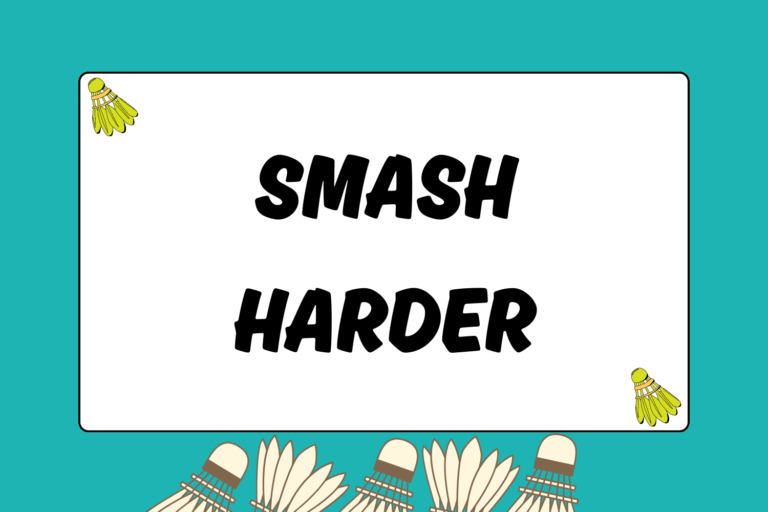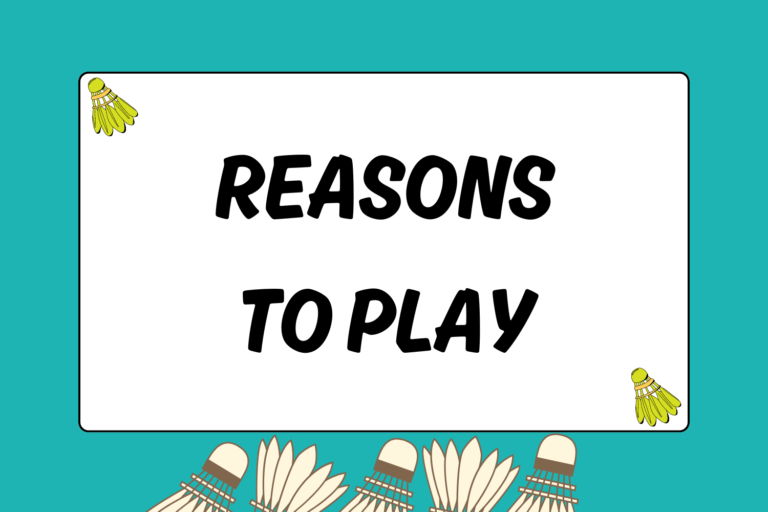You may have never picked up a badminton racket. Or perhaps you are accustomed to the gear used for outdoor badminton. Whatever the case may be, the badminton equipment detailed in this guide will be standard equipment used in competitive badminton.
There is a wide variety of shoes, shuttlecocks, and rackets that can affect how you play or enjoy the game. This guide will help familiarize you with the equipment you’ll need and use.
Badminton Rackets
A racket is easily the most important piece of equipment you’ll use. Badminton rackets are typically made of lightweight metals. Higher-end rackets will be comprised of titanium or graphite to shave off some weight.
Some facilities, like a community center, can lend you rackets and shuttlecocks at your request. You should, however, avoid these lower-end rackets because they often will have three things wrong with them:
Heavy Weight:
Not only will the additional weight make it more difficult to swing, it would also put you at risk of injury. Badminton relies on the quick flicking motion of your wrist for power. That being the case, the slightest weight difference will put more strain on your wrist.
Low String Tension:
Another drawback of using rentals is the significantly lower string tension. This may not be apparent at first, but having the string tension too low on a racket will completely diminish your power and control.
If the strings give too much, then you will have almost no feeling for the shuttlecock. Also, without the proper string tension, the repulsion from the racket will be severely lacking.
T-Joint:
The shaft and frame of a racket should be made of one continuous piece of metal. On cheaper rackets, however, you will find a t-joint that is designed to connect the frame to the shaft of the racket.
Having three pieces (shaft, t-joint, frame) replace one continuous piece drastically reduces the effectiveness of your shot. The amount of energy lost cannot be replaced by sheer power.
Hot Tip: Better Safe Than Sorry
If you’re purchasing a racket for a child, make sure you purchase a junior-sized racket. With a much shorter shaft and overall lighter weight, the junior rackets should put less strain on the child’s wrist.
The best way to know if a racket is suitable is to simply let the child play with it. When in doubt, though, always go shorter and lighter.
Badminton Footwear
After rackets, badminton shoes are the second most important piece of equipment.
Badminton shoes are indoor shoes designed for hardwood or rubber surfaces. The soles are made of rubber and specifically designed to offer high-grip, non-marking traction without leaving marks on the court.
The rubber soles provide added traction and a wide base that encases the shoe’s bottom to increase stability. Since much of badminton’s footwork involves shuffling feet side-to-side, the wider base is invaluable for supporting this movement.
If you’re not willing to spend money on a new pair of badminton shoes, any comfortable pair of tennis or running shoes should suffice. The key is that your shoes are stable enough to support your ankles since you’ll be doing a lot of lateral movements.
Badminton Shuttlecocks
Because of their delicate nature, badminton shuttlecocks can be very difficult to handle. The best approach is to stick with what is comfortable.
There are two types of shuttlecocks: Plastic and feather — and yes, they are as fragile as they sound. The typical shuttlecock you’ll encounter is made of plastic and cork, which is much more resilient than feather shuttlecocks. A plastic shuttlecock will normally last a month, depending on the usage and the kind of play it sees.
A feather shuttlecock, however, might not even last a game before it becomes unusable. The delicate nature of the feather shuttlecock is what makes plastic shuttlecocks a sensible alternative.
Despite this, high school badminton is the only level of competitive badminton that doesn’t use feather shuttlecocks.
While plastic shuttlecocks cost less and last significantly longer, they don’t offer the same quality of gameplay that feather shuttlecocks do. The difference between the two may not be obvious at first, but the flight behavior and weight play a role in higher levels of competition.
When striking a plastic shuttlecock, the impact is almost unnoticeable, whereas striking a feather shuttlecock will send a much stronger signal to your muscle memory. The feel of a shuttlecock is absolutely crucial, and it’s something only afforded by the weight of a feather shuttlecock.
Hot Tip: Be Thrifty!
If you’re a fan of feather shuttlecocks, use them wisely. Keep a stock of used feather shuttlecocks to hit around and practice with. This way, you extend the life of a tube of shuttlecocks by only using them for games.
Also, whenever you play at a gym, feel free to pick up any used shuttlecocks lying around on the courts. Many players will often leave old shuttlecocks behind, but some are still in playable condition.
Badminton Overgrips
Although the material or size of the grip on a badminton racket may seem like a minor detail, it can impact the way you swing a racket.
Oftentimes, the original grip on a racket will either be too small or rough for a player. This is where an overgrip adds girth and comfort. Overgrips are normally made of polyurethane, which feels similar to rubber but does not irritate the skin.
For those with sweaty palm syndrome, there is also a towel grip to help combat the slickness.
Appropriate Badminton Attire
The most basic aspect of badminton equipment is your clothing. Although there isn’t really a particular dress code for the sport, it is still vital to wear clothing that is comfortable and non-restrictive.
Since badminton is played indoors, it would be smart to wear light, breathable shirts to prevent overheating. Aside from the poor air circulation, gyms don’t usually run air conditioning because it can interfere with the shuttlecock’s flight.
Cotton and similar lightweight materials work, but ultimately, you should wear what is most comfortable.
For shorts, most players avoid wearing the baggy kinds, as they can get in the way of your swing. Basically, any comfortable pair of shorts that won’t impede your movement or the racket’s movement will be sufficient.
Purchasing Equipment
Knowing about the equipment is one thing; purchasing it is another. Of course there is always the rental option, too.
First, you must decide how often you plan on playing and how serious you are about the sport. New players giving the sport a trial run can get by with borrowing a friend’s racket. If you want to be competitive, then it would be smart to invest in a reasonably priced racket while keeping its weight and construction in mind.
Unless it’s your first time playing, avoid using rental rackets from gyms just because of the aforementioned drawbacks. You should be able to find a variety of reasonably priced beginner rackets at your local sporting goods store.
Badminton footwear, however, can be quite pricey, so unless you are genuinely serious about the sport, go with your sturdiest pair of tennis shoes.
Handle with Care
The equipment in badminton is simple and straightforward, but you need to handle it with care. Rackets can break from an unlucky frame shot, and shuttlecocks can fall apart regularly.
As long as you respect the equipment, you will increase its longevity and get the most value out of it. If you invest in a tube of plastic shuttlecocks and a decent racket, you’ll be all set!





